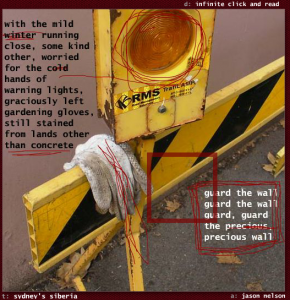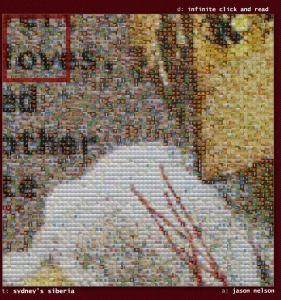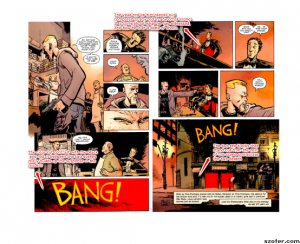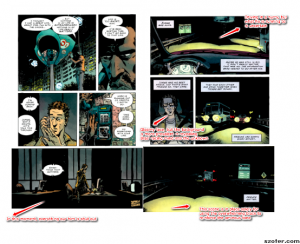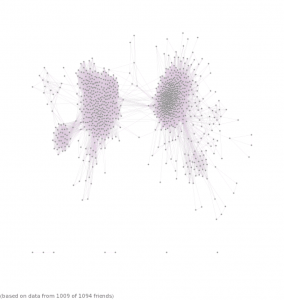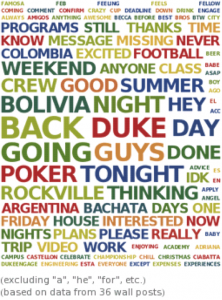Author: Diego Nogales Page 1 of 2
There is a possible and attractive IPO of Hortonworks, which is a maker of Hadoop Big Data software…. this is creating a big trend as many IPOs are moving into the big data market and creating serious competition of traditional companies like IBM or Google.Thought this was pretty interesting.
“Hadoop is one of the hottest open source frameworks for storing and analyzing chunks of data. It helps developers and enterprises to build solutions for what many call “big data,” which has become a multi-billion dollar industry. IDC predicts the big data market will become a $100 billion industry by 2020, with Hadoop comprising half of its value.
For those not familiar with Hadoop, it’s a software that makes it cheap and easy to manage massive bits of data. It processes petabytes of data on cheap hardware, unlike in the past when you needed supercomputers to work with.”
This is the link to the full article: http://www.businessinsider.com/hortonworks-files-for-ipo-2014-11#ixzz3J413TDnB
This week we explored the possibilities of how AR devices may change daily activities in the future. I was personally fascinated by the short film Sight, by Eran May-raz and Daniel Lazo. The most troubling issue that was presented in the short film was the possibility of people being able to hack or take control over someone else’s brain. This ending was very daunting and makes you wonder about how the effects of hacking or stolen data can evolve to consequences of that nature, if we continue to progressively give companies more and more of our personal information to them.
Aside from this message, what struck me the most was the constant level of interaction with the web or cloud that the future holds. In a larger scale, I am worried about how my generation is very active in social networks, online media, and just always connected. This is generally seen as a good thing, because it means that data is a lot more accessible to us and that we have fewer limitations in keeping ourselves informed. However, I also think this high level of dynamic interaction has developed shorter attention spans and has developed the need to constantly be doing something. I have find myself always wanting to multitask or fidget with my phone when I have free time. Many times, the technology that we have at our fingertips becomes exhausting to me. I am always refreshing different apps, and before it use to just be Facebook and emails. Now, however you have to be in Yak Yik, Facebook, Instagram, Groupme, and Snapchat to really “stay connected”. The thought of the addition of the Google glass to the addicting uses of television, phones, and computers, becoming a part of our daily lives is overwhelming. As we discussed in class, one example of this hyper use of technology is the possibility of advertisements coming into your Google glasses. This shows that you will be constantly flooded with online information without any real escape.
The more and more I read articles on new technologies, that more am I aware of the possible downside effects hidden behind the great innovation behind them.
Ebocloud by Rick Moss was definitely one of my favorite reads throughout this semester. It produced the idea of a world where a social, humanitarian network develops humans into group-minded, common goal-oriented tribes. This has a lot of ethical implications such as weighing the “greater good” over individuality. In the book where Ellie poses the question, “Are we talking about selfishness or individuality?” (Moss 195). Desalt argued that there really wasn’t a difference, “devoting yourself fully to the common good, you lose your self… [one] would argue that is a good thing” (Moss 195). The sorts of ethical questions that can evolve from a vision like this is what made this story so engaging. To think about how selfishness and individuality as intertwined characteristics removes the option of trying to remove only the one aspect of “bad” from human nature. Therefore, what comes with selfishness are important factors that make life rewarding and achievement-driven.
This ties back to Doug’s ultimate worry that “when we add something this big into our lives, we’re going to give up something equally big” (Moss 342). As shown later in the plot, the use of applications that control and allow for fluidity and complete sync within ebo tribes, enables a clear lost of authenticity and originality. The example of the how the Firewheels ebo tribe was able to orchestrate music through simple tools and objects was astonishing. However, thinking about it in retrospect, it is not that exciting because it was all controlled and this was not really a major achievement of skill and dedication, but rather of people being manipulated by one technology. The merit of personal achievement is not really there, and as we discussed class, how can people be distinguished by their skills if eventually this form of technology converges everyone into an equal field of skills and abilities?
The concept of the Ebocloud is fantastic from a broader overview, but it is easy to lose sight of the downfalls that come with such revolutionary technology. The book ended with the Ebocloud project moving forward as the entire group of main characters decide that it is for the best interest of society to cover up the past, and that the Ebocloud was bigger than them and all they had endured. It reveals how easy it is for technology to take control of the characters without them realizing it. Eli was not involved with Ebo until after the investigations and fires began, but by the end of the story he basically surrendered to the resolve that the deaths of few were not enough to stop the progression of a technology that truly was the root of the deaths. This ending along with other powerful scenes from when the Ebocloud was temporary down, “people [were] really freaked – pouring out into the streets like there’s been an earthquake”, really rattled me (Moss 385). The dangers behind these revolutionary technologies are how humans evolve dependencies on these technologies, which turn into submissive natures.
Moss, Rick. Ebocloud. New Orleans: Aquieous, 2013. Print.
There is currently a movement that is shifting the medium in which we read literature, from printed text to computer enabled literature. Electronic literature is relatively new and is still in the process of defining itself. The broader definition of electronic literature is currently, “work with an important literary aspect that takes advantage of the capabilities and contexts provided by the stand-alone or networked computer” (Electronic Literature Directory). In my opinion, this definition creates ambiguity as to what projects actually deserve or do not deserve literary merit for their work. The literary aspect is defined by Katerine Hayles in New Horizons for the Literary as “creative artworks that interrogate the histories, contexts, and productions of literature” (Hayles 4). The possible range in the scope of the literary within electronic literature is what makes this movement exciting. It gives writers and creators the flexibility to experiment and develop literary-focused projects that may fail to distinguish themselves as a electronic literature pieces, or may become projects that push perfectly far enough that they can essential redefine the classification boundaries of electronic literature. The extent to which the digital component can enhance the literary is limitless, and as there is further experimentation in this field, electronic literature will model itself under projects that are successful in intertwining the two aspects.
Not all projects are successful in aligning themselves under electronic literature, but one project that I enjoyed and molded under the electronic literature definition was Sydney’s Siberia. Jason Nelson produced this project while he was doing an arts residency in Newcastle. He took 121 different pictures throughout the city and created a poem. He used the use of infinite loops and zooming qualities that computers have, and created an infinite mosaic of the poem. Therefore, when you start the project on the internet, you have a small portion of the poem with a picture in the background and then you can zoom into the picture and find that the primary picture is actually comprised of tiny bits from a library of 121 pictures used in the poem and manipulated by variation of color to replicate just one of the pictures. You can zoom in forever, and you continue to discover all the 121 tiles within the poem.
This certainly fits into the definition of electronic literature, because the focus of the project is the literary aspect and the meaning behind the poem. However, the poem is complemented by the interactive design generated by the infinitely coded mosaic as the reader is also in control of determining which picture (with part of the poem) to view next. I liked some of the verses within the poem, but what I found most enjoyable about the electronic literature piece was the power I had in controlling the direction I took in reading the poem. This piece reminded me of Daytripper by Gabriel Ba and Fabio Moon, and it was all due to the use of computer coding in presenting the poem. The Daytripper chapters were not presented in chronological order, and I feel that this made the graphical novel more powerful and thought provoking.
In the same light, Sydney’s Siberia poem is not presented in order, and this creates a user-defined order (with repetitions or not). This allows for a unique experience for each individual user and for each individual occasion. Since this project was one of my to study, I must have started Sydney’s Siberia at least 20 plus times. Each time, I took a unique route and by doing so, I had a different interpretation in attempting to make a connection between picture and picture. This sort of project not only had the typical challenge for a reader to try and decipher the literary meaning behind the poem, but it also had the dynamic challenge to try and link the fragmented stanzas. This makes each interaction with the project an engaging academic challenge. Another task for the reader that I noticed was simply trying to determine where the poem might start and where the poem might end. Without the use of the computer capabilities to simulate fragmented and basically randomized poem stanzas, the poem would not be as engaging or powerful. Projects like Sydney’s Siberia use this trans-medial approach with the goal of developing these “simulative, emergent, and participatory models” (Hayles 17).
Critics may argue that these computer-generated features within the project do not align with the literary aspect behind the poem, or that these simulating features might distract or disrupt the literary. In response, I say that these features can develop in sync with the literary meaning behind the poem and its production. In Sydney’s Siberia, my belief behind the digital mosaic was that the creator wanted to demonstrate the thought process that goes behind making poems based on ordinary objects. Making a poem is not necessarily a completely linear development and a big challenge in formulating a poem comes from being able to organize your thoughts in a sequential order. I think the infinite mosaic reaches a deeper level, connecting the reader to the poet’s writing and thought process in developing such a poem. I think the idea is that any poet can have great thoughts and lines but that the figuring out how to link and make a successful poem has its own merit to it. This is reinforced by Janet Murray’s comments about the advantages to process transparency, “calling attention to the process of creation can also enhance the narrative involvement by inviting readers/viewers to imagine themselves in the place of the creator” (Hayles 16). Murray is actually discussing the transparency in the creation of the digital aspect of the projects but this relates to my point that maybe Nelson created this digital support to allow for transparency behind in the production of literary aspect itself.
This does not mean that all the digital aspects in projects related to electronic literature align themselves with enhancing the literary, or even that my interpretation of the digital aspect in Sydney’s Siberia was the actual purpose, but it speaks about the potential embedded in the digital aspects of these new projects. It also reinforces that electronic literature can produce powerful material that may reach higher levels of connection between the reader and writer that no printed based literature will ever be able to reproduce. Electronic literature is headed in the right direction, and it will be through more years of experimentation in this field that great projects, such as Sydney’s Siberia, will emerge.
Gould, Amanda S. “A Bibliographic Overview of Electronic Literature.” Http://www.directory.eliterature.org. N.p., 20 Apr. 2012. Web. 24 Oct. 2014. <http%3A%2F%2Fdirectory.eliterature.org%2Fnode%2F3706>.
Hayles, Katherine. “Electronic Literature: What Is It?” Electronic Literature: New Horizons for the Literary. Notre Dame, IN: U of Notre Dame, 2008.
I had never read a graphic novel until this past weekend. I loved reading Daytripper by Ba and Moon, because it was an easy and short read, but it conveyed so much more emotion than most books that I have read. Discussing the novel in class, the thing that resounded with me the most was the use of vivid colors by Ba and Moon. I noticed that the protagonist, Bras, did not have the most expressive reactions, but the set background is what gave each scenario life. The way that Ba and Moon strategically used the contrast of colors in between scenario or chapters was extraordinary. For example, the author rarely used bright red, but the bar scene in which both Bras and the bartender are shot at point blank is completely red. As a reader, all the red is very overwhelming and really heightens the reader’s senses, essentially transferring the character’s emotions off the page. In the scene, Bras’ face expression is pretty dull, not because he is bored, but because he is basically frozen. The loud red is what reveals that sentiment without needing to overly focus on the face expression of Bras in a graphics perspective.
Another color that Ba and Moon use in transferring emotion is the color black. When there is a lot of black within the scene, Ba and Moon are trying to create a sense of urgency or mystery. The scene where Bras goes to search for his best friend, Jorge, the deliberate black in the scenes reveals desolation and the character’s journey for answers. Jorge had just told Bras that he is going to do something with his life because he is tired of where he is at. Bras immediately hears this and craves the need to try and help him or talk to him. The urgency or desperation in Bras is revealed by the dark color tones as he is driving towards Jorge. These examples demonstrate how ingenious Ba and Moon were in their efforts to making this graphic novel very compelling to the reader.
When the “cloud” and Internet appeared into the world, there was great debate as to how to classify or label this medium for communication and information. Many individuals, like Barlow suggested that cyberspace was separate from the material world and that the typical “legal concepts of property, expression, identity, movement, and context do not apply to [cyberspace]. They are all based on matter, and there is no matter here” (Blanchette 4). This approach to network data from the tech industry and its leaders such as Amazon and Google promoted a divergence from the material, in the hope to place digital information and networking on a pedestal above all else. Of course these tech companies want to brand the cloud in this manner because it places their valuable digital information (revenue generator), into an “untouchable” land where typical regulations and laws are a blur. The interesting part is that the false advertisement of data on an immaterial level is not hard to achieve. As we discussed in our recent seminars, the idea of a cyberspace with digital data was something that was envisioned many years ago. This idea was portrayed in many sci-fi movies and futurist shows, such that when we look up cyberspace in Google, we find bizarre photos that do not resemble anything close to what data centers look like.
This means that the general public assumes that cloud space, to be an immaterial one. This implies that the reality of a material perspective of the Internet and networked digital systems is the alternate view rather than the principle one. In personal reflection, I knew that the cloud was not really in a “cloud”-like space, floating in the immaterial, but looking at the pictures of the Google Data Centers and looking at hardware components solidified that reality in a harsh way. For example, I did not know about the wired tunneled underneath the Atlantic Ocean, I just figured that they wired it some how, but I always kept it in the back of my mind and just thought of “Wi-Fi” when I would Skype with someone abroad. My natural instincts to simplify my view of digital networks overshadowed logical and reason. This is a common occurrence and to change the general perspective of the digital network to a material one would be extremely difficult.
Even though it is a challenge, after processing the readings for this week, I think that the material in the digital needs to be recognized. It is a necessity, not because a running imagination is a bad thing, but that grounding the digital space to the material will also link the digital to the same laws and regulations that other mediums face. This is absolutely necessary because the more we allow digital data to become “untouchable”, the more access siren servers, like Amazon and Facebook, have to power and money.
Blanchette, Jean-Francois. “A Material History of Bits.” Web. 10 Oct. 2014. http://polaris.gseis.ucla.edu/blanchette/papers/materiality.pdf
Sorry that I am not able to make it to class today, but I am going home early! However, I am uploading some of the results I received for my Facebook analytics.
Out of all the information the Wolfram shared about my profile, I thought the friend connect map was the most impressive! I thought that it was very indicative of my social circles. Essentially, I have two large groups and it makes a lot of sense because one of them is my high school circle and the other is my Duke University social circle. It was great to think about that going back home, because I never really thought about the divide between the two until looking at this connection map and it really impacted me. I never thought about how related my friends are to each other and Wolfram was able to summarize my social circle in about 10 seconds.
The other interesting interpretive graphic that I connected with a lot was the word frequency chart, where surely enough, DUKE and BOLIVIA were some of the most used words in my status posts. I thought that the chart was pretty accurate, and that it didn’t use just status posts but also comments I made in various Facebook groups and photos, so the Wolfram Analytics was very thorough in this regard.
Lastly, I am posting my Facebook bot that produced something pretty random but very funny:
Going to TC and to sleep at Strathmore at the Hispanic Alliance for education reception I’m on my way they run with my sis and and then stay in ARGENTINA this summer!!
-DiegoBot
Following the definition given by Ian Bogost in How to Do Things with Videogames: a “medium [is] an extension of ourselves for just this reason: it structures and informs our understanding and behavior” (Bogost 2). I want to extend this by arguing that video games act as a medium because they allow people to have an interactive experience that allows the simulation of a real event.
In properly arguing video games to be a medium, a video game must have the trait of becoming extensions of people’s realities. This intrinsic connection between a person and the digital environment within the video game lies within the change of perspective that a video game can provide. By forcing or allowing a person to play a player role within the video game experience, it allows a natural immersion into the scope and rules of the game. Lev Manovich states, “as the player proceeds through the game, she gradually discovers the rules that operate in the universe constructed” by the game (McKenzie 21). People become players within the game and they have to learn the limitations and constraints of their abilities in an algorithmically controlled setting. To win, one must conform to the rules and bound oneself in that immersive environment as quickly as possible. This is interesting because this arguably imposed mentality to become a subject within the realm of the game delivers the trait of the extent of one’s self within the game.
To share a personal experience as a gamer, I used to play a lot of FIFA (a soccer game) during high school. In addition to that, I was very active as an actual soccer player, playing Varsity for my high school and for a travel team as well. When I think about the power of video games as an extension of ourselves, I always refer to the integration of my real soccer player experience and my simulated soccer experience. The power of video games created a gray area and meshed those two aforementioned experiences in terms of my personal abilities. When considering video games to be a set universe with limitations, those limitations many times are greater than those of real life. FIFA allowed me to shoot greater distances, do skill moves, and run without getting tired. This influenced me because after playing FIFA and going to a soccer game or training I would over-estimate my abilities in those areas. This speaks volumes of how video games can temporarily mind alter your own physical capabilities. This creates an extended real-life experience, and does so in an enhanced form.
The second important characteristic to consider is the role video games play in structuring and informing our own understanding and behavior. I think this is really speaking about a medium’s cultural influence and relevance in human society. This characteristic of video games is clearly demonstrated in today’s society. As Neil Postman is quoted saying in How to Do Things with Videogames, “in the year 1500, fifty years after the printing press was invented, we did not have old Europe plus the printing press. We had a different Europe” (Bogost 6). Video games have contributed to changes in the modern culture, especially among the teenagers. Just to give an economic perspective of video gaming prevalence in the United States’ culture, Amazon acquired Twitch.tv for $1.1 billion a month ago. Twitch is a site that live-streams video game footage to 45 million viewers a month. Amazon, a company that is always following innovation and generally makes sound acquisitions, is moving into the growing video game industry within entertainment. Video games create cultural movements and big franchise games such as Call of Duty, Halo, and World of Warcraft develop an astounding following. Now, with the creation and growth of Twitch, people do not only have the hobby of playing video games, but also watch players play video games. When it reaches this level of hysteria and enthusiasm among the gaming community, it can only signify that video game industry has permanently embedded itself in society.
Video games meet the two defining traits necessary by Bogost’s definition. However, video games take it a step further as a very versatile medium. Even though they are known for their first person shooter and sport simulation games, video games extend much further than that. Aside from the general main purpose of video games, which is winning, new technologies are pushing video games to become more useful for educational or preparation purposes. One example that was shared with us in the DiVE (Duke Immersive Virtual Environment) lab was that they are trying to create a cave-like simulation that can be used to train U.S. Army soldiers in cave combat and essentially prepare them mentality for the darkness and tight spaces that they are to encounter in real warfare. This is similar to the enhanced experience that FIFA gave me to a greater degree; however, this video game would be exposing a soldier to a cave experience, and in doing so, mentally enhancing his or her readiness of what to expect.
It is important to understand how dynamically video games are expanding in cultural relevance and scope. New developers are branching out and focusing on directions varying from educational games for math courses to perfecting the coding physics for airplane pilots that now have to spend 100 plus hours on airplane simulators before being able to practice in a real plane. These are a few examples of the different directions gaming is moving towards. As this grows, the quality of simulation video games is inherently increasing.
Playing video games means “to play the code of the game. To win means to know the system. And thus to interpret a game means to interpret its algorithm” (Wark 21). As simulations improve and slowly coincide with the limitations or algorithms of real-life, (which is already starting to happen, having experienced the DiVE simulations) winning in the game will essentially mean winning in the actual real-life situation. To this hypothesis of the future perfection of video gaming simulations, Wark’s statement that video games are real-life and real-life is a video game may become true, because the distinctions may blur and become one (it is a scary thought, but it may not be far off).
Bogost, Ian . “Introduction.” How To Do Things With Videogames. Minneapolis: University of Minnesota Press, 2011. 1-8. Print. Mckenzie
Stone, Brad, and Adam Satariano. “Amazon Bets on Gamer Website Twitch in $970 Million Deal.” Bloomberg.com. Bloomberg, 25 Aug. 2014. Web. 06 Oct. 2014. <http://www.bloomberg.com/news/2014-08-25/amazon-buying-gamer-website-twitch-for-1-billion.html>.
Wark, McKenzie. Gamer Theory. Cambridge, MA: Harvard UP, 2007. Print.


